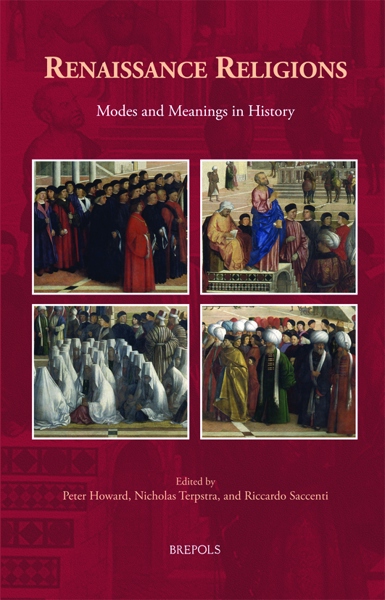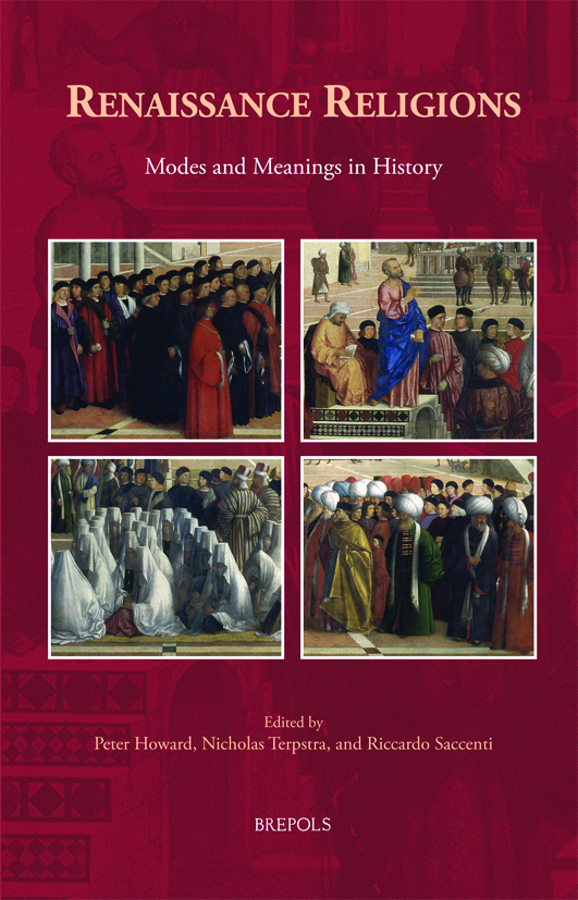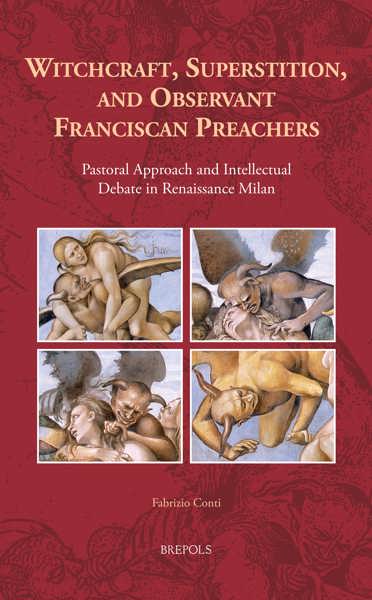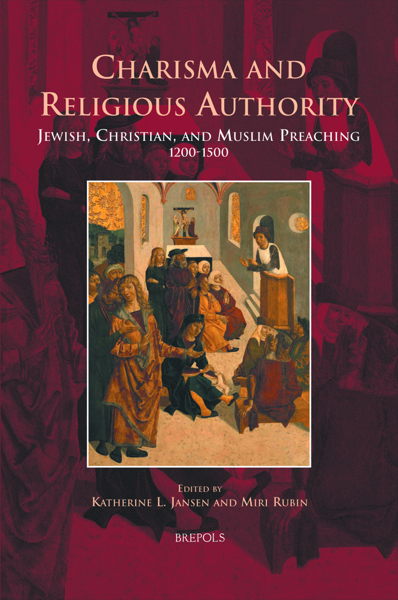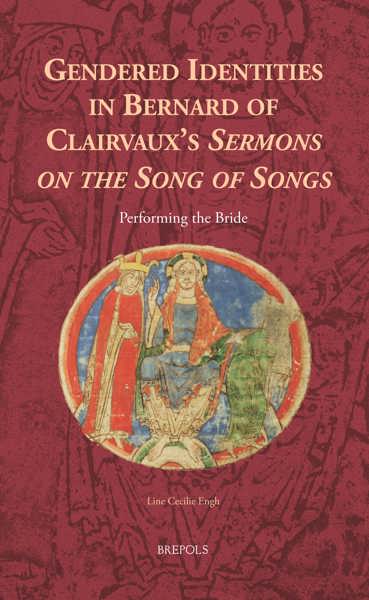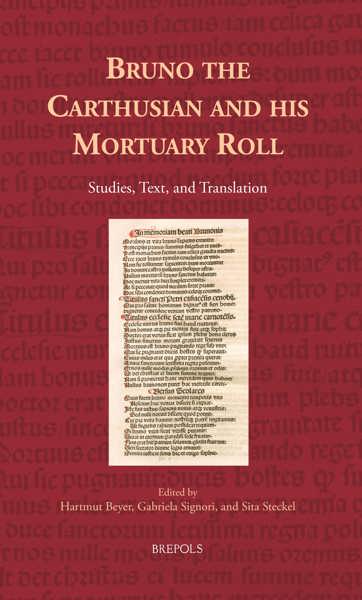
Renaissance Religions
Modes and Meanings in History
Peter Howard, Nicholas Terpstra, Riccardo Saccenti (eds)
- Pages: 400 p.
- Size:156 x 234 mm
- Illustrations:55 b/w, 19 col., 2 tables b/w., 2 maps b/w
- Language(s):English
- Publication Year:2021
- € 100,00 EXCL. VAT RETAIL PRICE
- ISBN: 978-2-503-59069-1
- Hardback
- Available
- € 100,00 EXCL. VAT RETAIL PRICE
- ISBN: 978-2-503-59070-7
- E-book
- Available
Renaissance Religions is a wide-ranging, comprehensive, multi-disciplinary volume, with contributions organized according to four themes: Negotiating Boundaries, Modelling Spirituality, Sense and Emotion, and Space and Form.
Peter Howard is Director of the Institute of Religion and Critical Inquiry at Australian Catholic University. His research and publications explore religious culture in its theological, visual, oral/aural and performative aspects.
Riccardo Saccenti teaches History of Medieval Philosophy at the University of Bergamo. His research explores moral discourse, with major publications on medieval theories of free will, natural law, the sacraments, and the early reception of Peter Lombard’s Sentences.
Nicholas Terpstra is Professor of History at the University of Toronto. His research traverses orphans, abandoned children, criminals, and the poor; early modern religious refugees and exile; space, mobility, and the digital mapping of early modern cities.
Several decades of cultural and inter-disciplinary scholarship have yielded, and continue to yield, new insights into the diversity of religious experience in Europe from the fifteenth through the seventeenth centuries. Revisionist approaches to humanism and humanists have led to a re-evaluation of the framing of belief; the boundaries between Christianity, Judaism, and Islam are seen to be more fluid and porous; a keen interest in devotion and materiality has lent new voice to 'subaltern' elements in society; sermon studies has emerged as a distinct discipline and a preacher's omissions are now understood to be often more telling than what was said; under the influence of the 'spatial turn' art and architectural history is generating new understandings of how belief and devotion translated into material culture; the emphasis in defining early modern Catholic culture and identity has moved from emphasizing reactions to Protestantism towards exploring roots and forms in fifteenth century reform movements; globalization, mass migration and issues surrounding social inclusion have re-positioned our understanding of reform in the late medieval and early modern period. The essays in this volume reflect these historiographical and methodological developments and are organized according to four themes: Negotiating Boundaries, Modelling Spirituality, Sense and Emotion, and Space and Form. This organization underscores how analysis of religious life clarifies the questions that are at the core of Renaissance studies today.
Approaching Renaissance Religions — PETER HOWARD
I Negotiating Boundaries
Urban Laity and the Construction of Religious Identities in Renaissance Italy — SABRINA CORBELLINI
Rethinking Jewish Conversion to Christianity in Renaissance Italy — TAMAR HERZIG
Creating Early Modern Martyrs in the Venetian-Ottoman Encounter — NIRIT BEN-ARYEH DEBBY
II Modelling Spirituality
Remembering Thomas Aquinas and the Saints of Dominican Renewal: Thomas of Siena and the Cividale Legendary — CONSTANT J. MEWS AND MARIKA RÄSÄNEN
Architecture and Religion in Renaissance Palaces: Patronage, Humanism, and Reformation in Northern Italy — FRANCESCA MATTEI
Sacred Images in Carlo Borromeo’s Instructiones: Between Liturgy and the Antique — GRACE HARPSTER
Iconography and Visual Hagiography: Carlo Borromeo’s Portrayal in Bolognese Churches (1611-18) — DANIEL M. UNGER
III Sense & Emotion
Purging the Eye: Images and the Cure for Lust in Catholic Reformation Italy — STEVEN F. H. STOWELL
Sins, Emotions, and Sounds: Dealing with Death in the Laudario of the Bolognese Confraternity of Santa Maria della Morte — GIOIA FILOCAMO
The Beginnings of the Musical Oratorio in Bologna (1660-99): Between Church and Academy — XAVIER TORRES
IV Space & Form
Early Experiments in Catholic Reformation Architecture: Galeazzo Alessi and the Church of Santa Maria Assunta di Carignano Genoa — REBECCA M. GILL
Art and Religion in Late Renaissance Arezzo: Reconsidering Vasari’s Church Renovations — SALLY J. CORNELISON
Pulpits on Trial in Renaissance Italy: Some Methodological Issues concerning Preachers, Inquisitors, and Historians — GIORGIO CARAVALE
The Artistic Decoration of Organ Shutters: Hearing and Seeing Redemption in the Renaissance — SERENA QUAGLIAROLI
***
Renaissance Religions: Afterwards? — NICHOLAS TERPSTRA
Index
